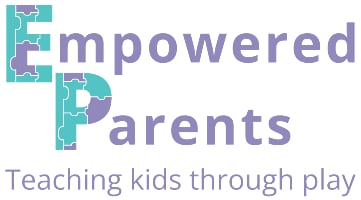“Put your slippers on and grab a spoon for your cereal.” Easy to do, right?
For adults and older kids, following directions that have two steps can be quite an effortless task. For toddlers and young preschoolers, following multiple directions is a skill that takes time and maturity.
You can practise this skill in a fun way by using the 2-step instructions below.
List of 2-Step Directions
Some of the following examples include directions with prepositions or spatial concepts, such as “on,” “under”, and “over.”
Make a game out of these directions. You can do this by incorporating them in familiar games that require giving directions, such as Simon Says or Follow the Leader.
You could also play Broken Telephone to see if the last person who hears the directions can follow through successfully. Another fun game is Listen and Draw.
Here is a list of instructions suitable for preschoolers:
1. Sit down on the floor and close your eyes.
2. Touch your head and turn in a circle.
3. Stand up and pretend to be frozen.
4. Bounce the ball and say your name.
5. Do a jumping jack and then sit on the chair.
6. Hop on one foot and smile.
7. Place the teddy bear under the table and sit on the chair.
8. Walk along the fence and sit on the swing.
9. Reach your hands over your head and clap your hands.
10. Stand next to Grandma/Grandpa and hold onto their hand.
11. Draw a yellow sun above the green grass.
12. Draw blue water next to a brown beach.
13. Touch your toes and then spin around in a circle.
14. Wash your face with this cloth and comb your hair.
15. Spread peanut butter on one slice of bread and place the other slice on top.

16. Pull your blanket up on the bed and arrange your stuffed animals.
17. Take a book out of your bag and set it on the table.
18. Lie down next to Mom/Dad and close your eyes.
19. Take off your mittens and hang them up to dry.
20. Point to your eyes and say your name.
21. Point to your lips and smack them together.
22. Turn off the TV and place the remote on the coffee table.
23. Stomp your feet and say, “I’m a dinosaur!”
24. Choose a book from your shelf and read it to your doll.
25. Cover your eyes and say, “Boo!”
26. Turn around in a circle and then sit down on the grass.
27. Wave goodbye to me and walk to the door.
28. Climb up the steps and then walk back down.
29. Fetch your school bag and put your lunch box inside it.
30. Wash your hands for dinner and come back to sit on a chair at the table.
These are just a jumping-off place to start your mind working. Involve your children and challenge them to make up their own directions and ask you to follow them.
Why Give 2-Step Instructions?
Following directions that include two tasks is an important listening skill for children to learn. This helps them play games, follow instructions and procedures in the classroom and fit in socially with friends.
Being able to follow two-step instructions involves developing different types of skills.
- Working memory is about holding onto information in order to use it. We want to be sure that kids can follow one-step directions effectively before moving ahead to giving them two steps to follow.
- Auditory processing skills are also very important for enabling kids to follow directions they hear.
- For example, auditory memory refers to when kids remember what they have heard, to use that information later.
- Auditory closure helps them “fill in the blanks” when they have missed hearing the complete direction and auditory figure-ground aids kids in tuning out background noise to hear instructions. [source]
- Speech therapy addresses not only how well children speak in words (expressive language) but also how well they understand what they hear (receptive language).
- The receptive aspects of speech therapy are connected to auditory processing, and getting lots of practice in following directions is helpful to build those skills.
- Verbal reasoning and vocabulary skills are also essential for children to comprehend your instructions. They must understand the words you are saying to be successful.
When Should a Child Follow 2-Step Directions?
At 24 months of age, many children can follow two or even three-step directions, especially those that are related, such as picking up two specific toys to put away on a shelf.
Although they can do this, research shows they choose to follow through only about half the time.
At around age three, most kids effectively follow two-step directions.
So then, when should a child follow 3 step directions?
Four-year-old children are usually able to follow through on three-step instructions, especially those that are given in a logical order.
[source]

How to Teach Children to Follow Multi-Step Directions
It’s important to talk to your children often, giving voice to your own thought process as you move through your day. Verbalize what you observe about their movements throughout the day, as well.
Read to your children, pointing to illustrations, and urging them to name objects.
Listening skills in early childhood are very important and must be practised. Here are some tips:
- When giving children instructions, state them clearly, in simple language, and give them enough time to respond.
- Look at them when giving directions, and make sure they are looking at you.
- Restate or clarify if a child has not followed through on the instructions given.
- Model the correct actions, if necessary.
- Praise your children when they follow through on a single instruction; they will eventually build the ability to follow multiple-part instructions.
- Don’t start giving 3 step directions until a child has mastered 2 instructions.

Check out these other listening activities for kids to get even more practice.
Simple 2-Step Directions to Build Preschoolers' Listening Skills
Notes
Here is a list of instructions suitable for preschoolers:
1. Sit down on the floor and close your eyes.
2. Touch your head and turn in a circle.
3. Stand up and pretend to be frozen.
4. Bounce the ball and say your name.
5. Do a jumping jack and then sit on the chair.
6. Hop on one foot and smile.
7. Place the teddy bear under the table and sit on the chair.
8. Walk along the fence and sit on the swing.
9. Reach your hands over your head and clap your hands.
10. Stand next to Grandma/Grandpa and hold onto their hand.
11. Draw a yellow sun above the green grass.
12. Draw blue water next to a brown beach.
13. Touch your toes and then spin around in a circle.
14. Wash your face with this cloth and comb your hair.
15. Spread peanut butter on one slice of bread and place the other slice on top.
16. Pull your blanket up on the bed and arrange your stuffed animals.
17. Take a book out of your bag and set it on the table.
18. Lie down next to Mom/Dad and close your eyes.
19. Take off your mittens and hang them up to dry.
20. Point to your eyes and say your name.
21. Point to your lips and smack them together.
22. Turn off the TV and place the remote on the coffee table.
23. Stomp your feet and say, “I’m a dinosaur!”
24. Choose a book from your shelf and read it to your doll.
25. Cover your eyes and say, “Boo!”
26. Turn around in a circle and then sit down on the grass.
27. Wave goodbye to me and walk to the door.
28. Climb up the steps and then walk back down.
29. Fetch your school bag and put your lunch box inside it.
30. Wash your hands for dinner and come back to sit on a chair at the table.


Paula
Monday 2nd of June 2025
I’d love a printable. Thank you!
Tanja McIlroy
Thursday 12th of June 2025
I've added one at the end of the article!
Rachel
Friday 27th of September 2024
I'd love a printable. Thank you!
Shelley
Saturday 30th of March 2024
Thank you for the printable 💕💕
Tanja McIlroy
Sunday 31st of March 2024
You're welcome, Shelley!
Shelley
Saturday 30th of March 2024
These are great! Is there a printable list as well? Thank you.
Tanja McIlroy
Saturday 30th of March 2024
Sending it to you via email!
sareh
Saturday 28th of January 2023
so good
Tanja Mcilroy
Monday 30th of January 2023
Thanks!